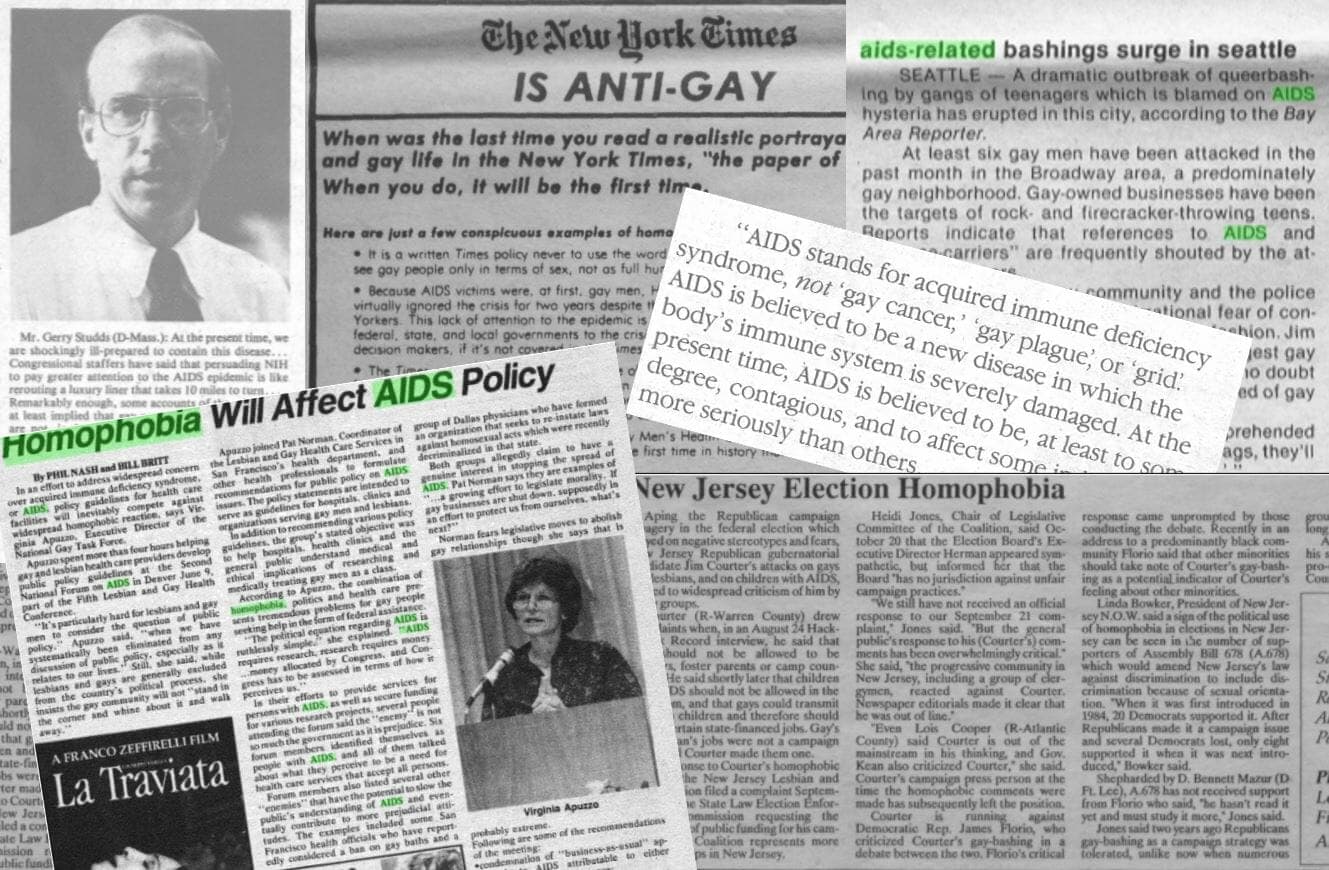|By Rory Herbert, Gale Ambassador at the University of Portsmouth|
During the early 1980s, AIDS became an ever-growing concern in the minds of Americans, and brought to the fore the deep-seated tensions and homophobic tendencies that plagued the nation’s media and political institutes. Gale’s Archives of Sexuality and Gender provides access to a wealth of sources that help us to understand the issues and struggles experienced by these long-oppressed and ignored members of society during a particularly trying period.
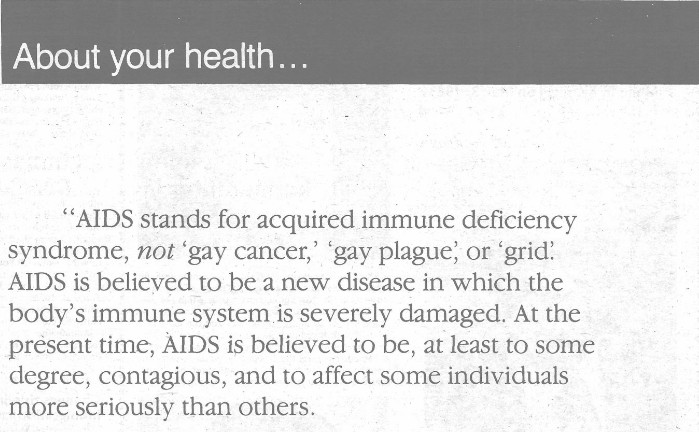
The media was initially reluctant to report on the growing epidemic
Initially dubbed ‘GRID’ (Gay-Related Immune Disorder) within scientific communities, AIDS was largely attributed – and in some cases blamed – on the gay male community within the US. As the virus seemed to affect mainly this vulnerable minority, there was a reluctance in the media to report on the growing epidemic and, unsurprisingly, the outbreak was initially largely ignored. This highlights the media’s reluctance to portray, and at times deliberate omission of gay men from press coverage. The New York Times, for instance, was criticised for its refusal to acknowledge, or at least positively portray this lifestyle, publishing only negative stories related to the community.
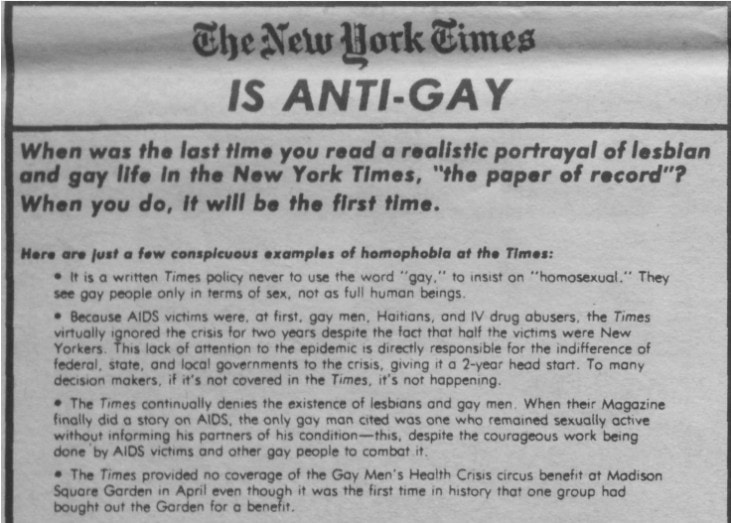
Consequently, newspaper stories detailing the lives and experiences of AIDS sufferers were few and often their portrayal was heavily driven by prejudice. Picking up on the contrast, congressman Gerry Studds highlighted the difference between the portrayal of gay and non-gay sufferers of the disease. The former were dismissed and labelled as liable, whilst the latter were considered innocent victims and true sufferers.
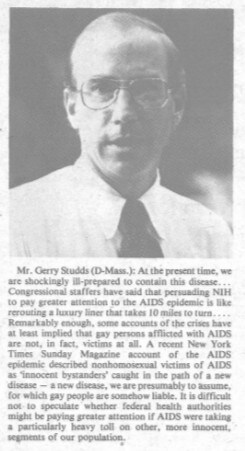
https://link.gale.com/apps/doc/UGPDSN162865082/AHSI?u=uniportsmouth&sid=bookmark-AHSI&xid=9364efd3
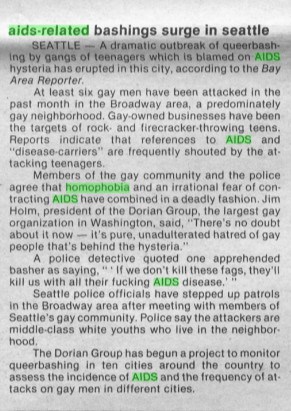
Negative media reporting around the AIDS crisis increased homophobia in society
With media coverage offering such negative and slanderous depictions of gay men within society, it is unsurprising that this social group experienced increased homophobia related to the AIDS crisis. The lack of scientific understanding of the disorder fuelled increased hatred towards the community who found themselves increasingly under attack from all fronts.
Homophobia would go on to encroach into the politics of the time as well. Republican politician Jim Courter, for instance, exploited the AIDS crisis during his campaign; directly attacking the community, and threatening to dismiss gay individuals even if they did not have the disease. What is most shocking was his ability to make such statements and actively promote discrimination and prejudice in official campaigns, as it indicates the sheer lack of protective rights granted towards gay men at the time in the US. Even his rival, who challenged such statements, refused to make guarantees to the gay demographic.
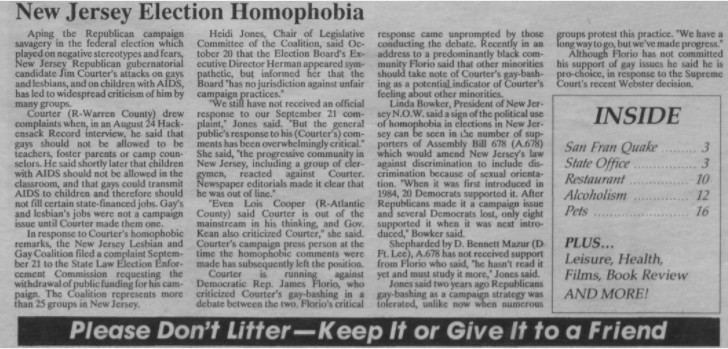
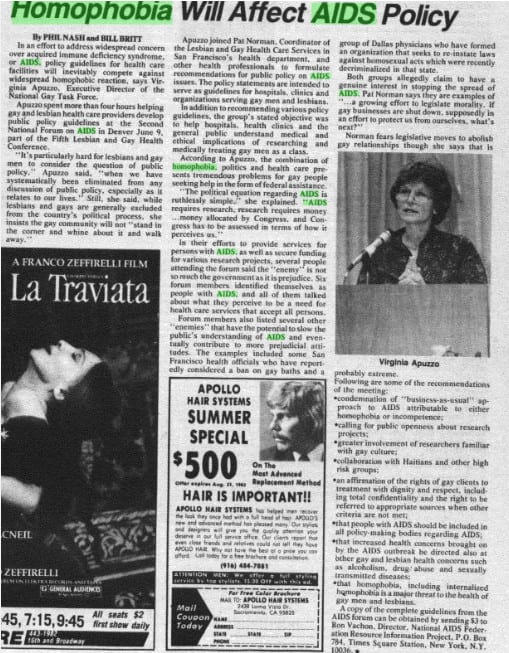
Many gay activists and pressure groups began to fear the repercussions of the increase in homophobic politics and media, and worry about the impact it would have on dealing with the AIDS crisis. Just as the media had been slow to respond, the gay community found government efforts (such as arranging research funding) were reluctant, delayed and half-hearted.
In conclusion, I believe these primary sources show that the way sensationalist elements within the media reported on the 1980s AIDS crisis both highlighted and exacerbated toxic attitudes within American society towards the gay community.
Please note: This blog post was updated in January 2022 to clarify language and update vocabulary.
To learn more about LGBTQ+ history, check out:
- Pride and Protest: LGBT+ Disability Activism in the US, 1985-1995
- The Lesbian Avengers and the Importance of Intersectionality in LGBTQ+ Activism
- Lesbians and Gays Support the Miners
- Franco Stevens and the History of Curve Magazine
To learn more about the sexuality content in Gale’s Archives of Sexuality and Gender series, check out:
- Sex! … and Sexuality, and Gender – about the third part of the series, Sex and Sexuality, Sixteenth to Twentieth Century
- Exploring Early Modern Erotica and Social History in L’Enfer de la Bibliothèque nationale de France
- Exploring Twentieth-Century Art and Social History in Erotica in L’Enfer de la Bibliothèque nationale de France

